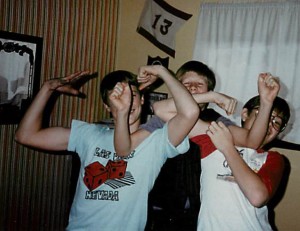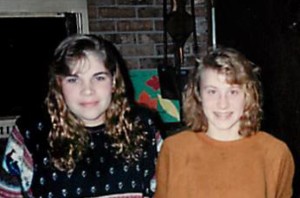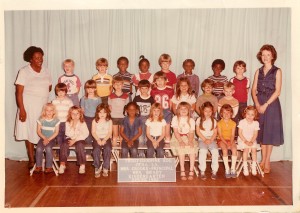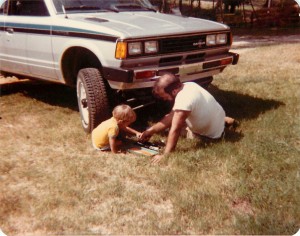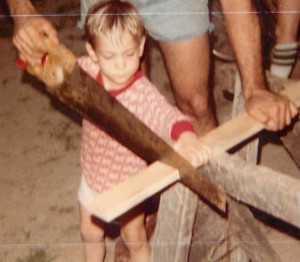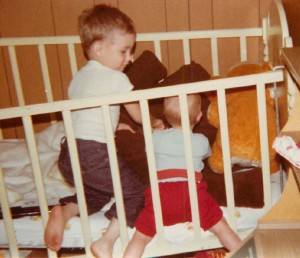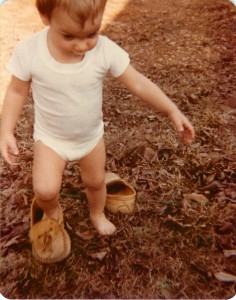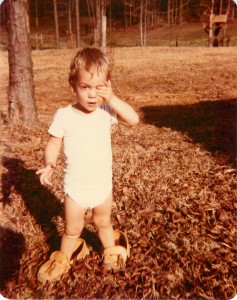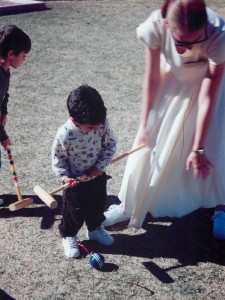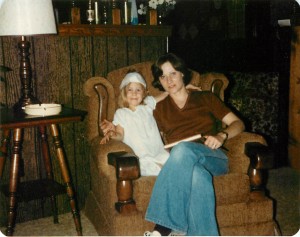 We lived on 12 acres in rural Louisiana. It was the best playground and science lab any kid could ask for…and sometimes it was a battle ground.
We lived on 12 acres in rural Louisiana. It was the best playground and science lab any kid could ask for…and sometimes it was a battle ground.
It was the month of my younger brother’s second birthday, and the following month I would be turning five. My older brother, an eight year old, had led us down to a spot maybe 200 yards away from the house where the rain water had made miniature canyons out of the mud. The ground had dried hard and was the perfect spot for building bridges for toy cars. There was an abundance of sticks and twigs, and we gathered them and set to work. My younger brother kept taking my sticks and refused to use the ones I had generously given him. He wanted mine and that was that. The next thing I knew my older brother began screaming at the top of his lungs. There was a sharp pain in the back of my head and my blonde hair turned red. I saw my mom, in a light blue v-neck t-shirt, sprinting down from the house. She scooped me up and began running with me back to the house. She was calling for my aunt, who was visiting, to go and get the boys. I looked back and saw my little brother staring at us, holding a toy hammer in his hand. I was crying and my hair was sticking to my face. I laid my head against my mom’s chest and smelled her perfume. All the sounds were dulled by the pounding in my head.
At the hospital she laid me down. The nurse was gruff and told me to settle down, which rarely works on a four year old. I was sobbing and then a plastic sheet was over my face. I was sucking in air so forcefully that the sheet pulled tight to my nose and face. I was choking, I couldn’t breath, I was scared and they were trying to give me shots. I began to fight the sheet and the nurse yelled at me again. Someone held my arms down. The next thing I remember was getting a bandage on my head, and my mom telling me something sweet.
Back at home I felt quite special. I got my picture taken, and had my bedtime stories read to me in the living room. My parents and aunt discussed the events from earlier in the day as I listened. My mom had changed out of her blue shirt and my aunt asked if she thought they would be able to get the stain out. I wondered about my own t-shirt from earlier. It was one of my favorites and had my initials on it.
Toddlers and young children are impulsive, and act upon their feelings. **They don’t think first.** That’s just how it is. Often parents and caregivers try to stop behaviors, but I’d like to suggest that that is nearly impossible. Instead, help the child develop a replacement behavior. Hitting, throwing and biting are probably the top three behaviors that I have encountered that parents and teachers want to stop for obvious safety reasons. When children are young they often lack the language skills to express how they feel. Parents can help children by identifying and labeling emotions from infancy. This is just one way to help children. When children are very young and introduced to others it is natural for them to grab another child or person, touch and pull hair, pat or hit another child. This is not a problem behavior forming, but rather the child trying to engage with another. Sometimes a toddler will walk up to another child, push them, then smile. What they are really saying is, “I don’t know how to engage in play. I want to play with you.” Parents and caregivers can help by being present and close, not just watching from across the playground. Babies and toddlers often need an adult to help them use ‘gentle touches’. When a young child takes a toy from another child, try not to intervene right away. The other child may not even mind. If they do mind, then help your child choose something else to play with. This is all part of the learning process, and is easier said than done-but worth it.
Knowing what I know now, my younger brother may not have just wanted my sticks, but wanted to play WITH me. When I wouldn’t let him, by taking my sticks back from him, he became upset and hit me with the claw end of the hammer. If he hadn’t had that hammer, it probably would have just been his hands.
Over the years the family joked about keeping an eye on my brother around tools. Interestingly, he has become quite proficient with tools and even has a website and YouTube channel to show off his talents. I’d like to think I had something to do with his early tool experience.
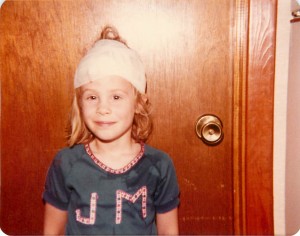
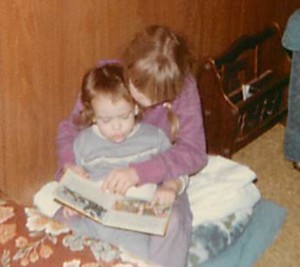
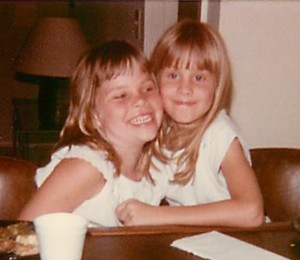
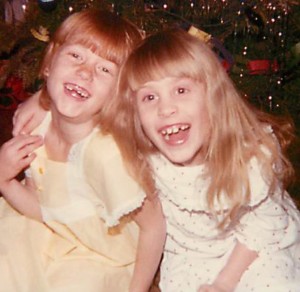
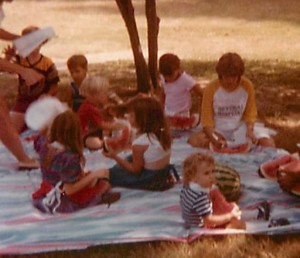 In honor of National Cousins Day I write this post. My brothers and I have 23 first cousins, and more second cousins than I’m willing to count at the present. Family events were such fun because you were guaranteed to have friends and playmates there. I am among the older half of cousins on both sides of my family, and as I grew, new cousins were added to the mix. With cousins you can be silly, and get yelled at by parents, aunts and uncles, and it all seems right. My cousins were my first friends, and the newer additions were really my first students as I attempted to teach, boss, help, and mother them. Our familiarity seems almost instant at family events now. The bonds are there and will continue to be there. Love and hugs to all the cousins out there, especially mine.
In honor of National Cousins Day I write this post. My brothers and I have 23 first cousins, and more second cousins than I’m willing to count at the present. Family events were such fun because you were guaranteed to have friends and playmates there. I am among the older half of cousins on both sides of my family, and as I grew, new cousins were added to the mix. With cousins you can be silly, and get yelled at by parents, aunts and uncles, and it all seems right. My cousins were my first friends, and the newer additions were really my first students as I attempted to teach, boss, help, and mother them. Our familiarity seems almost instant at family events now. The bonds are there and will continue to be there. Love and hugs to all the cousins out there, especially mine.
